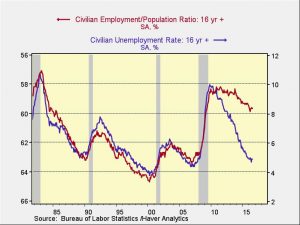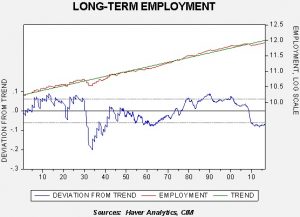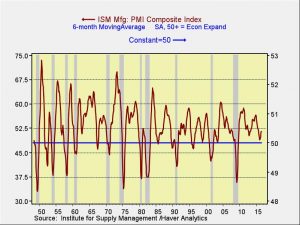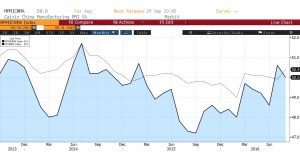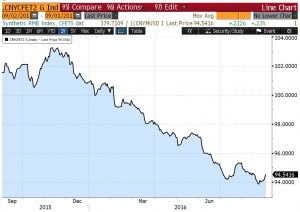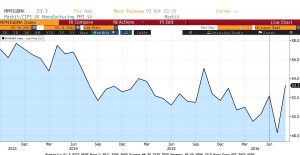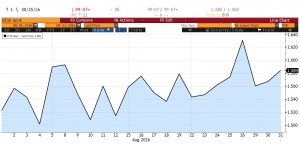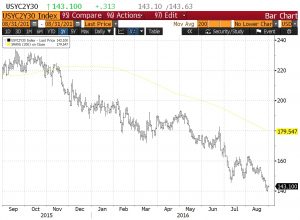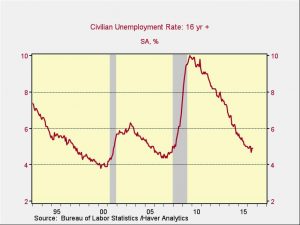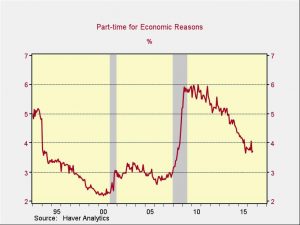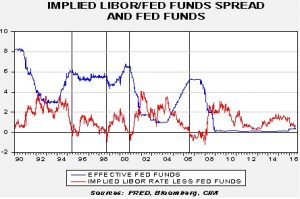by Bill O’Grady and Kaisa Stucke
[Posted: 9:30 AM EDT] Well, it’s time to say goodbye to the summer. Our reflections on the long weekend’s news:
The lead article in Sunday’s NYT was all about climate change and coastal flooding. The report documented rising sea waters affecting numerous communities along the Atlantic Seaboard, although there were references to problems developing on the Pacific side as well. Climate change is a controversial topic. We believe it is happening but the causal factors are complicated. Human activity likely plays a role; so does sunspot activity. It is clear that there have been wide swings in temperature in the history of Earth that also occurred prior to the time of mankind. Our view on this topic is the same as our position on politics. We don’t take positions—we react to what policymakers are likely to do and how their actions will affect financial and commodity markets.
The article makes clear that the GOP leadership in Congress is not going to bend on this issue as it views climate change as either a hoax or unrelated to human activity. If the GOP is ever going to change on this issue, it won’t come from the leadership; it will come from the sub-Federal level. Governors and major city mayors dealing with the effects of climate change will call on Washington for help. Eventually, we expect legislation to have an impact on markets.
Economically, this is a straightforward fix—you simply tax carbon emissions. Markets will adjust quickly. The problem, of course, is the incidence of the tax (economist jargon for “who pays?”). Many opponents of climate change legislation fear that forces outside their influence will allocate most of the costs to them while allowing others to go about their lives with little impact. This is partly why they vehemently oppose climate change legislation. The impact of environmental legislation on coal workers is a case in point. One blogger we read remarked that if climate change legislation made air travel prohibitively expensive (especially private air travel), then it might be easier to get the majority of citizens on board.
The NYT also reported that the U.S. and China agreed to the Paris climate agreement while the president was in China. However, buried in the report were details that China has only agreed to have its carbon emissions “peak or plateau” by 2030. The U.S. has committed to reduce emissions by 25%, based on levels in 2005. Thus, China’s agreement is far less momentous.
President Obama’s visit to China for the G-20 meeting was described as “bumpy.” Chinese security officials did not allow the president to deplane by the side steps but forced him to exit through the underbelly of Air Force One. Usually, this exit is only utilized when an area is insecure, such as in Afghanistan. According to reports, there were several incidents of friction between Chinese and American officials regarding who could be in the president’s entourage. We suspect this was designed to put the president on the defensive and help Chinese negotiators.
The WP reports that the Philippines’ Air Force noted that at least eight Chinese vessels were spotted near the Scarborough Shoal, an area of tension between the two nations. The fact that China would take such provocative action during the G-20 and the ASEAN meetings that followed suggests the Xi regime is testing American resolve as U.S. elections loom.
We have been concerned for some time[1] that Iran, Russia and China would use Obama’s lame duck period to press their claims, assuming that the administration would be reluctant to use force in front of the elections. Russia’s recent behavior in Syria and Ukraine along with China’s continued belligerence both suggest these fears are being realized.
Populism is a growing trend in the Western world. Chancellor Merkel’s party, for the first time, gathered a smaller share of votes in a state election compared to the populist and anti-Eurozone AfD (Alternative for Germany) party. The AfD won 22% of the vote in the Mecklenburg-Western Pomerania, a state on the Baltic coast, compared to 19% for Merkel’s Christian Democrats. The Social Democrats won control with 30% of the vote; this party has held power in the state since 1998. This is Merkel’s political homeland, so losing to the AfD is a severe rebuke to her open immigration policy.
In other European news, acting Spanish PM Rajoy lost another confidence vote, signaling that Spain will likely need to hold another round of elections. If a government isn’t formed by Halloween, the third election in less than a year will be necessary.
The ECB meets on Thursday and the WSJ asks an important question—will the European Central Bank adopt the policy of the Bank of Japan and start buying equities? Based on ECB rules, the bank is starting to run out of bonds to buy. This isn’t unprecedented in Europe. The Swiss National Bank, facing the same problem, accumulated $100 bn of equities when it was pegging the CHF/EUR exchange rate. The BOJ has been buying equity index ETFs in Japan. To some extent, owning stocks may be safer than owning lower rated bonds as equities won’t default. On the other hand, companies do go bankrupt and equity holders are usually left with nothing. Still, if the goal is to use asset markets to lift economic activity then equities are a logical extension.
Although there is a persistent anti-Trump tone in the media,[2] we note that the NYT ran two articles on Sen. Clinton over the weekend that put her in an unpleasant light. The first discussed her email woes and new revelations that suggest she was less than truthful in her depiction of them. The second revels in her fundraising with the super wealthy. Although raising money from the rich is a time-honored political practice in U.S. politics, she faces persistent charges that she is beholden to the moneyed class. This was Sen. Sanders’s argument against her candidacy. The fact that the NYT prominently reported on this may be taken, at least in part, as a signal of disapproval.
Several sources report that Saudi Arabia and Russia are considering a plan to “stabilize” oil prices. We suspect both are trying to talk the market up; the former wants stronger oil prices before its debt deal, the latter because that is the basis of its economy. We doubt anything real will come from the oil meetings later this month, but oil prices will likely be underpinned in front of them. Until the inventory overhang is reduced, it will be difficult for oil prices to rise. Seasonally, this is a weak period for oil and prices would likely be lower without the jawboning.
However, there is one factor that could make a real difference. The Venezuelan state oil company, PDVSA, has a $3.0 bn loan payment due in October and November. An additional $2.0 bn of general sovereign payments are due in November. Although the Maduro government continues to insist it will meet all its debt obligations, simple math suggests it is running out of money. If Venezuela defaults, bondholders may try to seize Venezuelan oil in the U.S. We note that Citibank (C, 47.53) has ended its role as payment processor for bondholders. Citibank has apparently become concerned that it might face legal liability as the DOJ and Treasury have been investigating PDVSA’s criminal activity; money laundering was one focus of the investigation. Venezuela will be forced to find another bank to take on that role, and it will likely default if it can’t find one.
American refineries are capable of refining the heavy, sour Venezuelan crude. Other non-U.S. refineries would be forced to mix the oil with lighter crudes to process them. If any of those other oils are touched by the U.S. oil industry or the American financial system, then seizure is possible. Thus, Venezuela would be forced to sell oil to a nation outside U.S. financial jurisdiction. China is pretty much the only nation that fits the bill. However, Venezuela is already deeply indebted to China, with 0.5 mbpd of oil already going there for debt service. We doubt China would want more of Venezuela’s oil, at least at market prices. The bottom line is that if Venezuela defaults, 1.5 mbpd of global oil production may come off the market. This would help rebalance the global oil market. We also note that Venezuela sells about 0.7 mbpd to the U.S. If it defaults, these oil exports will likely end; this may narrow the Brent-WTI spread in favor of the latter.
View the complete PDF
___________________________
[1] See WGR, 6/27/2016, The Mid-Year Geopolitical Outlook.
[2] For a good analysis of this, see http://www.rollingstone.com/politics/matt-taibbi-on-the-summer-of-the-media-shill-w434484.



